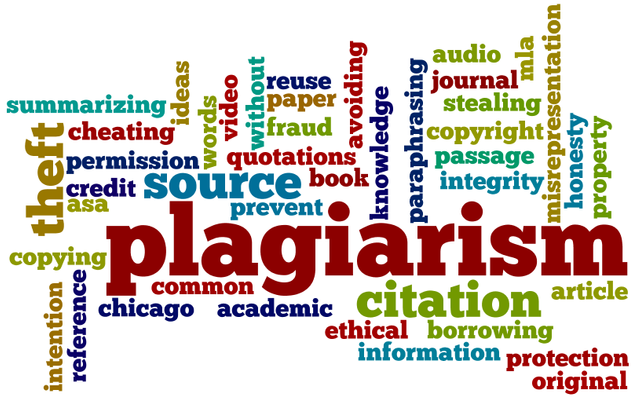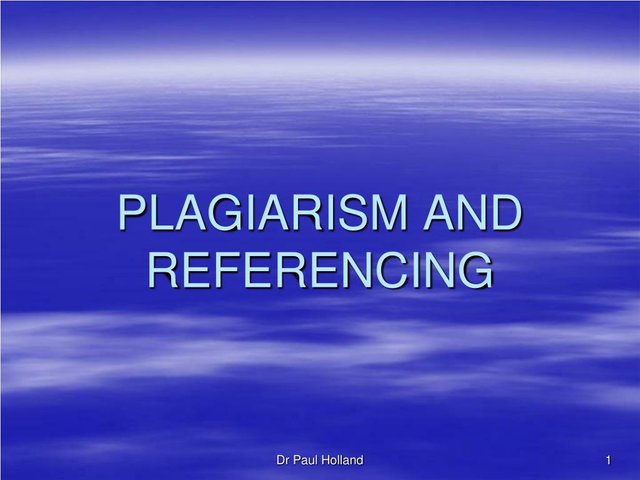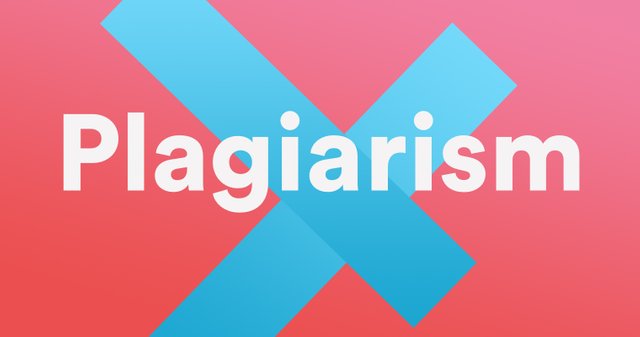Achievement 3 by dolphin33- Content Etiquette

Voices.la.psu.edu
Good morning fellow steemians,
Hope everything is fine. I’m very happy today to present my idea concerning achievement 3(CONTENT ETIQUETTE)

Slideserve.com
Definitions of REFERENCING
•Referencing is about telling the reader the source(s) of your research idea(s).
•Referencing is mandatory that all ideas, facts, theories and interpretations from an outside source be referenced.
•Failure to properly and adequately acknowledge sources is called plagiarism
•Plagiarism can cost you significantly including losing your certificate, grant or sponsorship.
ADVANTAGES of referencing
•It shows the reader that you can find and use source to create a solid argument.
•It properly credits the originators of ideas, theories and research findings.
•It shows the reader how your argument relates to the big picture.
ELEMENTS of referencing
•A citation inside the body of text/assignment:
• author-date style (eg. APA, MLA, Harvard) put the author’s name inside the text of the assignment.
•Documentary-note style (eg. Chicago and Oxford) put the author’s name in a footnote at the bottom of each page, or in an endnote at the end of the assignment.
•Numbering System
•An entry in a reference list or bibliography at the end of the assignment:
•The reference list is a list of all the sources used or cited in the work (proposal/ synopsis, project work, thesis, dissertation, etc.).
•It is usually alphabetized according to the names of authors.
NUMBERING System
The deliberate eating of non-food substances is known as pica [1]. However, modern
literature has shown that human health is intimately linked to diet and healthy eating. Some
people consume non–food substances such as charcoal, uncooked rice and earthy materials
[2] in order to cure some ailments or for cultural reasons. Geophagy is the most common type
of the deliberate eating of earthy materials of non-nutritive substance such as clay. It is an
ancient practice that still occurs in most parts of Ghana, especially in its rural areas. The
precise reasons underlying the practice of geophagy in Ghana still remains unknown,
although some geophagists and vendors of geophagic products suggest their consumption for
nutritional [3, 4] and medicinal purposes [5]. Other geophagists, mostly from northern Ghana,
also indulge in the practice for cultural and spiritual reasons. Typically, in Ghana, the practice
is generally common among children and females, especially menstruating girls, lactating
mothers and pregnant women [6-9].
REFERENCES
Arhin, E., Jenkin, G.R.T., Cunningham, D, and Nude, P. 2015. Regolith mapping of deeply weathered terrain in savannah regions of the Birimian Lawra Greenstone Belt, Ghana. Journal of Geochemical Exploration, vol. 159, 194-207.
2.Arhin E. and Nude P. M. 2009. Significance of regolith mapping and its implication for gold exploration in northern Ghana: a case study at Tinga and Kunche. Geochemistry: Exploration, Environment, Analysis, vol. 9, p. 63-69.

Grammarly.com
Outline of PRESENTATION
1.What is plagiarism?
2.Types of plagiarists
3.Types of plagiarism
4.Common Knowledge vs. ideas and interpretation
5.Your responsibility
What is Plagiarism?
Plagiarism is the act of copying or including in one’s own work, without adequate acknowledgement, intentionally or unintentionally, the work of another, for one’s own benefit.
TYPES OF PLAGIARISTS
•The accidental plagiarist
•The opportunistic plagiarist
•The committed plagiarist
The ACCIDENTAL plagiarist
•The accidental plagiarist is one who either does not understand plagiarism or makes a mistake in quoting, citing, or paraphrasing. The accidental plagiarist may suffer from ignorance, information overload, or disorganization.
(Beasley, 2003)
The OPPORTUNISTIC plagiarist
•The opportunistic plagiarist is one who knows that it is wrong to plagiarize but does it anyway due to disorganization, information overload, ethical lapses, or laziness.
(Beasley, 2003)
The COMMITTED plagiarist
•The committed plagiarist is one who intends, with forethought, to cheat by stealing others words and/or ideas. Committed plagiarists may suffer from disorganization, information overload, ethical lapses, or laziness.
(Beasley, 2003)
FORMS of Plagiarism
•Verbatim plagiarism
•Mosaic plagiarism
•Inadequate paraphrase
•Uncited paraphrase
•Uncited Quotation
[Categorizations of the Harvard Guide to Using Sources]
Verbatim plagiarism
•If you copy language word for word from another source and use that language in your paper, you are plagiarizing verbatim. Even if you write down your own ideas in your own words and place them around text that you have drawn directly from a source, you must give credit to the author of the source material, either by placing the source material in quotation marks and providing a clear citation, or by paraphrasing the source material and providing a clear citation.
[Source: Harvard Guide to Using Sources]
Mosaic plagiarism
•If you copy bits and pieces from a source (or several sources), changing a few words here and there without either adequately paraphrasing or quoting directly, the result is mosaic plagiarism. Even if you don't intend to copy the source, you may end up committing this type of plagiarism as a result of careless note-taking and confusion over where your source's ideas end and your own ideas begin. [Source: Harvard Guide to Using Sources]
Inadequate paraphrase
•When you paraphrase, your task is to distill the source's ideas in your own words. It's not enough to change a few words here and there and leave the rest; instead, you must completely restate the ideas in the passage in your own words. If your own language is too close to the original, then you are plagiarizing, even if you do provide a citation. [Source: Harvard Guide to Using Sources]
Uncited paraphrase
•When you use your own language to describe someone else's idea, that idea still belongs to the author of the original material. Therefore, it's not enough to paraphrase the source material responsibly; you also need to cite the source, even if you have changed the wording significantly.
[Source: Harvard Guide to Using Sources]
Uncited quotation
•When you put source material in quotation marks in your essay, you are telling your reader that you have drawn that material from somewhere else. But it's not enough to indicate that the material in quotation marks is not the product of your own thinking or experimentation: You must also credit the author of that material and provide a trail for your reader to follow back to the original document. Citations should always go directly after quotations. [Source: Harvard Guide to Using Sources]
The Exception: Common Knowledge
•The only source material that you can use in an essay without attribution is material that is considered common knowledge and is therefore not attributable to one source. Common knowledge is information generally known to an educated reader, such as widely known facts and dates, and, more rarely, ideas or language. Facts, ideas, and language that are distinct and unique products of a particular individual's work do not count as common knowledge and must always be cited.
[Source: Harvard Guide to Using Sources]
Commonly used items
•You would not be plagiarizing if you borrowed items that are commonly or frequently used in academic English or that are part of common knowledge:
–Accra is the capital of Ghana
–An increase in demand often leads to an increase in price
–These results are statistically significant
Your responsibility
•Avoid plagiarism by conducting your research and writing carefully and responsibly:
–Proper note-taking
–Proper attributions / citations
–Avoid cut and paste from electronic sources
–Be truthful to yourself, the scholarly community, and posterity
I have read and understood the Steemit Etiquette on Steemit Community and will do my best to embrace them.
@oppongk @njaywan @cherub27 @nattybongo @fombae @cryptokannon
Achievement 2 link please
https://steemit.com/hive-172186/@dolphin33/achievement-2-basic-security-on-steemit
@fombae
Congratulations your achievement has been verified. Now you can successfully proceed to your next achievement.
Rate: 2
Hi, @dolphin33,
Your post has been supported by @ashkhan from the Steem Greeter Team.